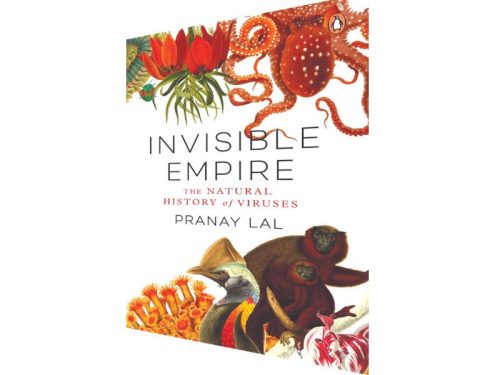Emperors of Gaia: Invisible empire: The natural history of viruses
In this fascinating book the author unravels the mysterious ways in which viruses orchestrate the cycle of life on Planet Earth, writes Anil Thakore

Invisible empire: The natural history of viruses
Pranay Lal
Penguin Random House
Rs.799
Pages 278
In January 2020, news emerged of a mysterious fever in China. Until it was identified as the SARS-CoV-2 or Covid-19 virus, it had spread globally and by November, an estimated 122 million individuals worldwide were infected by it. Latest figures suggest that 600 million people have been infected and the Covid-19 death count is estimated at 7 million worldwide, of which 5 million — against the official death count of 520,000 — could be in India.
As panic, fear, death, and economic disruption sweep across the world, virus has become a dread word. This is not warranted, says Pranay Lal, a biochemist, caricaturist, animator, journalist and environment sustainability campaigner and author of Indica — A Deep Natural History of the Indian Subcontinent (2016), which has won plaudits and several international awards.
According to Lal, most viruses are benign and beneficial for humankind. In this fascinating book with excellent illustrations, he unravels the mysterious and miraculous ways that viruses (aka microbes) go about their lives, and how they orchestrate every activity in the cycle of life on this planet. The existence of any species on earth would not be possible without viruses.
As Lal tells it, six billion years ago, a bacterial phyllum, Cyanobacteria and other photosynthesizing organisms, multiplied profusely and produced so much oxygen that our planet froze into a ball of ice heralding the Ice Age. It took another virus — cyanophage — over 200 million years to curb and kill the growth of Cyanobacteria, and restore the planet into a habitable environment which kick-started the evolutionary process of all species that inhabit Planet Earth currently.
Broadly categorised under the umbrella of microbes, i.e, organisms that can be seen only under a microscope, viruses are the world’s most abundant life form and are not only the engines of evolution, but also digest, produce, process, ferment, breakdown, recycle, reformulate and synthesise all chemicals that make this planet habitable for the species living on it. The discovery of viruses — perhaps the first inhabitants of this planet — as a distinct species happened less than 100 years ago. In 1939, the first microbe — the tobacco mosaic virus — became visible following invention of the electron microscope. Thus, virology is in its infancy. The word virus is derived from the Sanskrit vish, denoting venomous poison. The numbers and species of viruses are inestimable. Trillions upon trillions live in the human body (and in the bodies of all species), performing miraculous functions that make life possible.
Only an infinitesimal fraction of microbes makes us sick, even fewer have power to kill us. Most simply pass through us, and a few use us as a substitute to make more of their kind. “They usually don’t bother us in the least and some, in fact, many actually do us good,” writes the learned author who in this book with excellent illustrations recites the history of microscopy. Pasteur’s battles against rabies, the discovery of the DNA, RNA molecules by Watson and Crick are recounted.
Moreover, a chapter titled ‘A Spotty History of the Speckled Monster,’ narrates the horror and havoc that the smallpox virus created in the Americas and Asia in the 18th and 19th centuries. This engaging history also recounts the origins of biological warfare, and discloses how European colonisers of the Americas deliberately infected native Indians with smallpox viruses embedded in blankets in order to wipe them out. From the Black Death plague of the 14th century until British physician and medical scientist Edward Jenner (1749-1823) discovered the principle of vaccination and found a defence against deadly microbial infections, this encylopedic tome tells it all.
The success of latter day vaccines invented at great speed to control — even if not eradicate — the Covid-19 pandemic, suggests that human ingenuity and advances in medical science can combat virulent viruses. But, Lal warns that viruses possess incredible capacity to shuffle their genes and mutate rapidly. Indiscriminate use of chemicals, tinkering with microbial genes, climate change or any activity that threatens the planetary ecosystem can provoke violent mutations in somnolent microbes and unleash deadly pandemics.
The Covid-19 pandemic which locked down the world for almost a year, is proof of the lethal potential that viruses possess and their capability to destroy millions of lives before a suitable antidote is manufactured. Collectively, major known killer viruses have already decimated at least three billion people. Perhaps they are nature’s solution to the rapid multiplication of homo sapiens.
Be that as it may, in this path-breaking history of virology, Lal presents invaluable information about the invisible rulers of our Planet. This work of scientific enquiry and research is highly recommended for a greater understanding of the planetary ecosystem and of the incredible ways in which unseen microbes orchestrate life on earth.
Lal’s closing advice is that viruses are our friends. They are the emperors of this planet. Don’t mess with them.

















Add comment